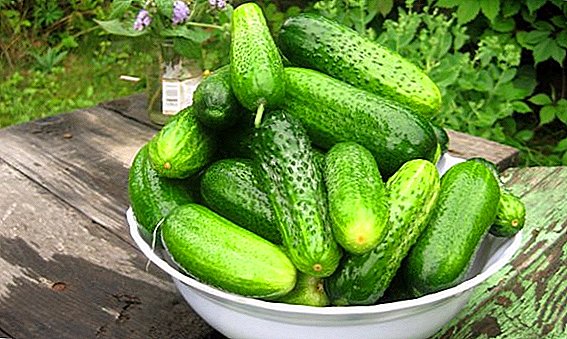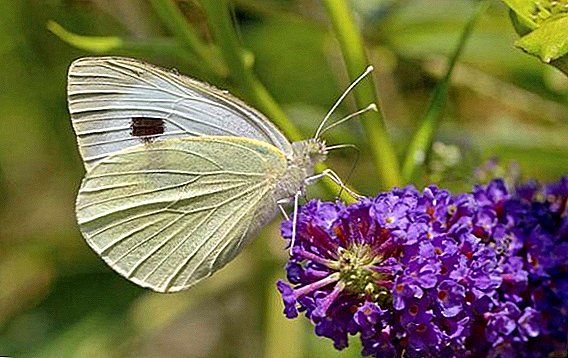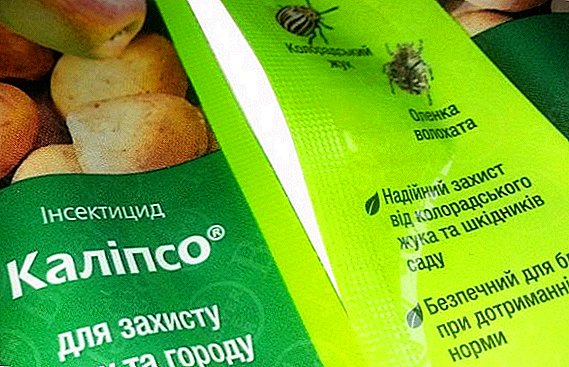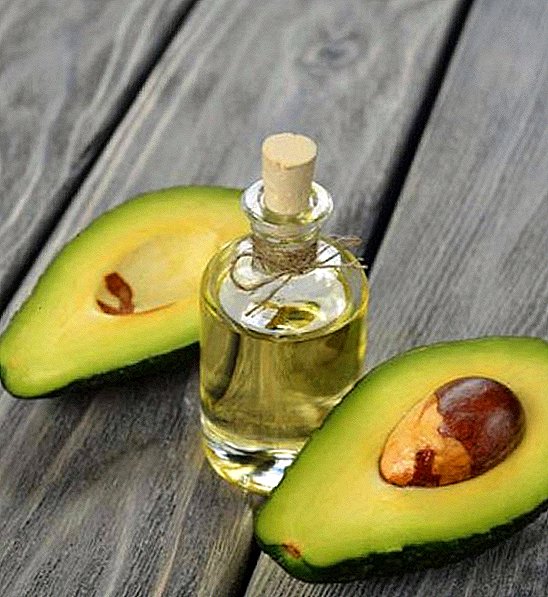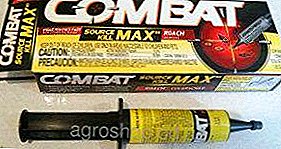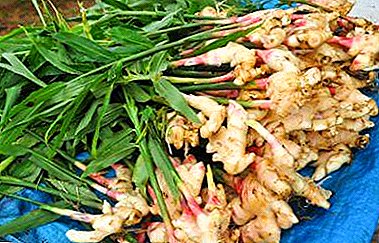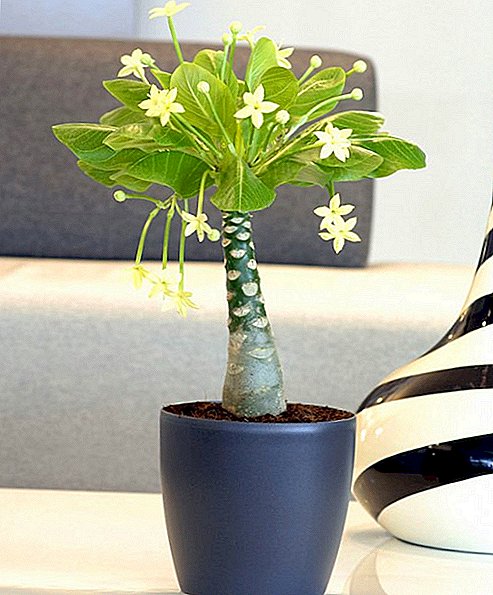 The brigamy houseplant looks very unusual and looks like a palm tree or a cabbage. This exotic plant is grown at home not very long ago, but its popularity among gardeners is growing steadily. Read on how to care for brigamia.
The brigamy houseplant looks very unusual and looks like a palm tree or a cabbage. This exotic plant is grown at home not very long ago, but its popularity among gardeners is growing steadily. Read on how to care for brigamia.
General information
Brighamia is an ancient plant originally from the Hawaiian islands of Kauai and Niihau. Wildlife habitat is restricted to Hawaii.
Brigamy has several names, from colorful to authentic Hawaiian:
- Hawaiian palm;
- volcanic palm;
- cabbage on a stick;
- alula (olu).
Did you know? Conservation of US Natural Resources reported in 1994that in the natural environment grows from 45 to 65 brigamies, and pile on their endangered species. In 2014, in natural conditions, botanists registered only 1 copy. As of 2018, the plant is probably considered extinct.
Professional flower growers are engaged in breeding brigamy for sale. You can also grow Hawaiian palm trees and houses.
Appearance
 Brighamia is a succulent stem plant. Its height is 1-5 m, depending on growing conditions. The base of the trunk is thicker, upward it narrows. At the top of the stem is a compact rosette of fleshy leaves. Sheet plate grows to 30 cm in length.
Brighamia is a succulent stem plant. Its height is 1-5 m, depending on growing conditions. The base of the trunk is thicker, upward it narrows. At the top of the stem is a compact rosette of fleshy leaves. Sheet plate grows to 30 cm in length.
Hawaiian palm blooms from September to November. The flowers consist of five petals, light yellow or cream, collected in inflorescences of 3-8 pieces. in the leaf sinuses. The average length of the petal - 7-14 cm. When flowering emit a pleasant aroma. The fruit box resembles a capsule and is 1.3-1.9 cm long. Inside there are seeds.
Main types
Botanists distinguish 2 types of brigamia:
- Brighamia is gorgeous also known as insignis, or wonderful. The trunk is rather evenly thick, although widened downwards, the shade of the flowers is closer to yellow, the seeds are covered with fine husks.
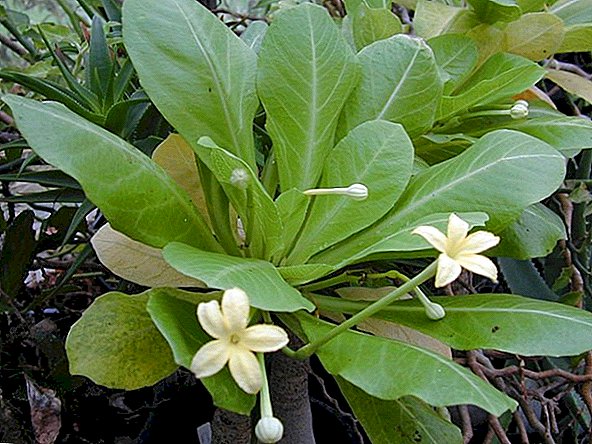
- Brighamy roka - the trunk is thicker at the base, the flowers are mostly cream-colored, the seeds are smooth. More common for indoor breeding.
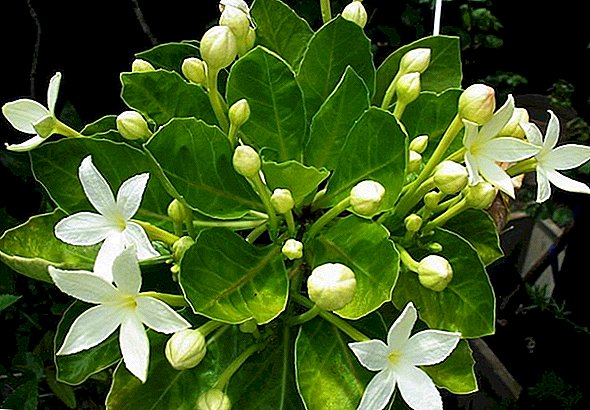
Beneficial features
When the plant was available in the wild, Hawaiians were preparing from the leaves and stem medications. The islanders believe that vegetable juice heals wounds and soothes skin irritation. However, the drugs were made only by popular doctors, since the juice from the leaves is dangerous in a concentrated form.
Important! Do not allow liquid from the leaves of the Hawaiian palm on the skin and mucous membranes. If it does, thoroughly wash the affected area with water.
How to choose when buying
A good healthy brigamia has the following parameters:
- trunk thick and holistic;
- leaves without damage;
- the soil is dry;
- there are no pests on the outer and inner sides of the sheet.
Care after purchase
Insignis is a demanding plant that needs to be adapted and transplanted after purchase. These important measures contribute to the further healthy growth of the Hawaiian palm.
Adaptation
The adaptation period after purchase lasts from 2 days to 1 month. An important measure in acclimatization is accustoming to bright light. This will help prevent sunburn. On the day of purchase, the pot with a flower should be placed in the shade, and then gradually push the plant towards the window.

Do not worry if after buying a Hawaiian palm will drop the leaves. Crown dropping is a normal process when changing habitat. After the final acclimatization, the plant will again grow foliage.
Transfer
In flower shops, brigamy is sold mainly in transport peat, so after purchase it should be transplanted into a suitable substrate. However, the plant does not tolerate changes, especially during the period of adaptation, and it is not worthwhile to replant the brigamy immediately after purchase. Acclimatization itself can disrupt plant development, and a quick transplant will aggravate the situation.
Florists have a different opinion about the Hawaiian palm transplant after purchase. The stores often care for flowers for sale unprofessional. Some sellers often and many water the plant, not taking into account its requirements, and this starts the root rot.
Also read about the care of such exotic plants as pachypodium, alokaziya, drimiopsis and pandanus.
The rotted rhizome does not allow the flower to adapt normally to new conditions. As a result, the plant dies. A transplant makes it possible to identify rotting roots on time. At the same time, the soil is replaced with a suitable one. The risk most often justifies itself - a succulent with clean roots in good soil successfully survives and grows.
In the future, transplants are necessary for the plant: the rhizome grows as it grows, so it becomes cramped in the old pot. While the Hawaiian palm is young and actively growing, it is transplanted every year. For adults, the pot and soil should be changed no more than 1 time in 2 years, less often. The right time is from March to May. Soil for brigami need to cook yourself. Optimum acidity - pH 5.5-6.5

With a simpler cooking method, mix:
- ready substrate for cacti (1 part);
- sand (1 part).
A more complicated recipe involves the connection:
- perlite or sand (3 parts);
- garden land (2 parts);
- humus or leafy earth (2 parts);
- coal (1 part);
- bone meal, lime, or crushed eggshell.
Did you know? Brighamia got its name in honor of William Tufts Brigham, the first director of the Museum of Cultural and Natural History in Honolulu.
To transplant, follow these steps:
- At the bottom of the pot, lay the drainage of expanded clay or broken brick.
- Pour half of the substrate.
- Moisten the soil of brigamy.
- Remove the plant from the old pot.
- Remove the earthen room from the rhizome.
- Inspect the root system for integrity.
- Put the Hawaiian palm in a new pot.
- Pour into the container the rest of the substrate.
It is recommended to water the flower in 5-7 days after transplantation.
Further care
Brighamia is a capricious plant, and the quality of its crown depends on proper care, and it plays a major aesthetic role in its appearance. Pay attention to the location of the pot with the plant, temperature, humidity, watering and fertilizer.

Location selection
Hawaiian palm feels great on the windowsill of a southern, western or eastern orientation. The plant requires a lot of light, but it is desirable to arrange for him a bright diffused lighting. Direct sunlight burn leaves. The shadow also negatively affects the state of brigamy - the leaves may fall off.
Draft for this succulent is unacceptable - it must be protected from possible sudden gusts of wind. In late spring and summer, a pot with a plant can be taken out to the garden or to the balcony, because fresh warm air, unlike drafts, is useful for brigamy.
Temperature conditions
Brighamia refers to the heat-loving plants.
She needs such a temperature regime:
- in winter - not below + 15 ° С;
- in summer - around + 24 ... + 27 ° С.

Air humidity
Humidity must be maintained at 70-75%. Spraying is important for optimum air humidity. Moisturize the crown of the palm of an atomizer every day in moderation.
Watering
For irrigation brigamy use soft water with a temperature of + 23 ... + 25 ° C. Before using it is better to defend it.
The need for irrigation, determine the dryness of the soil.
Seasonal frequency of moisture is as follows:
- in the summer - once a week;
- in winter - 1 time per month.
Important! According to flower growers reviews, the Hawaiian palm is a capricious and complex plant that can rot even with very poor watering. Do not moisten the soil abundantly, let it dry.
Top dressing
Fertilize brigamy should be in the period from March to August. The frequency of nutrients - 1 time per month. As a top-dressing, any soluble products for cacti and succulents are suitable. In the composition must be phosphorus - this element will allow the Hawaiian palm to grow actively. Top dressing needs to be brought in the soil, dissolving a concentrate in water for watering.
Remember also about additional subtleties of top dressings:
- if the brigamia was grown in an industrial greenhouse, it is possible to fertilize the flower after 2 years;
- after transplantation, it is recommended to feed the plant in 1.5-2 months.
Pruning
Hawaiian palm does not need pruning.
How to propagate a flower at home
Flower growers propagate brigamy in 3 ways: cuttings, young shoots and sowing seeds. Cutting is a simple method that is suitable for beginners in floriculture.

It is necessary to remove the cuttings according to the following instructions:
- Prepare the sand by burning it in the oven.
- Pour the sand into a cup or a small pot.
- Cut the leaf leaf list.
- Place the stalk in the sand.
- Cover the container with film.
- Keep until rooting at a temperature of + 25 ... + 27 ° С.
- Periodically air the stalk and spray it with a spray bottle.
- After the leaf has taken root, transplant it into suitable soil.
The method of young shoots is more complicated, but for a responsible grower, it will not become a problem.
Instruction:
- Cut with a knife part of the stem.
- Wait until a small escape appears.
- Cut it carefully and let it dry for 24-48 hours.
- Prepare a sand substrate and pour it into a cup.
- Similar to cutting, place the cutting in the sand and cover the container with a film.
- Before rooting, maintain a temperature of + 25 ... + 27 ° C, periodically air and spray with a spray bottle.
- After rooting the shoot, transplant it into suitable soil.
Explore popular types of alokazii.
The most difficult method for experienced breeders of indoor plants - seed reproduction.
Seeds can be bought in specialized stores, but their cultivation is quite laborious:
- Soak the seeds for a day in the water.
- Prepare a substrate of perlite, sand and peat.
- Sow the seed soil.
- Cover the container with film.
- Place the crops in a dark place with a temperature range of + 25 ... + 27 ° С.
- Periodically aerate the soil and spray it with a spray bottle.
- After 2-3 weeks, when seedlings appear, remove the film and rearrange the container to light.
- Let the temperature regime remain at the same level, also spray the seedlings moderately.
- When the seedlings grow to 3 cm, dive it into separate pots in a suitable soil.

Growing problems
Of the pests of brigamy the most insidious are:
- thrips;
- spider mite;
- aphid.
According to the owners, the spider mite appears on the plant most often, and the cause is very difficult to identify. If any pest occurs, use the insecticide "Fitoverm". A common disease is root rot, which occurs due to abundant or frequent watering. For treatment, transplant the plant. When transplanting, inspect the rhizome, remove the rotten parts and process the sections with coal powder.
With further care, try not to overwet the flower. Since the Hawaiian palm is demanding of conditions, with improper care it may fall foliage. To restore the plant, analyze the care, correct the deficiencies and adjust the approach to growing. Brighamia is a spectacular, but very demanding plant. Not every amateur grower can handle this succulent. However, proper care and patience of the owner will allow for a long time to enjoy the beautiful look and aroma of the flower.




